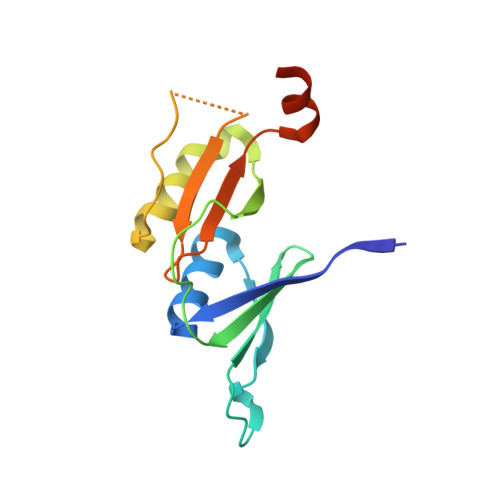Mechanistic diversity of fosfomycin resistance in pathogenic microorganisms.
Fillgrove, K.L., Pakhomova, S., Newcomer, M.E., Armstrong, R.N.(2003) J Am Chem Soc 125: 15730-15731
- PubMed: 14677948
- DOI: https://doi.org/10.1021/ja039307z
- Primary Citation of Related Structures:
1R9C - PubMed Abstract:
Microbial resistance to the antibiotic fosfomycin [(1R,2S)-epoxypropylphosphonic acid, 1] is known to be mediated by thiol transferase enzymes FosA and FosB, which catalyze the addition of glutathione and l-cysteine to C1 of the oxirane, respectively. A probe of the microbial genome database reveals a related group of enzymes (FosX). The genes mlr3345 from Mesorhizobium loti and lmo1702 from Listeria monocytogenes were cloned and the proteins expressed. This heretofore unrecognized group of enzymes is shown to catalyze the Mn(II)-dependent addition of water to C1 of the oxirane. The ability of each enzyme to confer resistance in Escherichia coli is correlated with their catalytic efficiency, such that the M. loti protein confers low resistance while the Listeria enzyme confers very robust resistance. The crystal structure of the FosX from M. loti was solved at a resolution of 1.83 A. The structure reveals an active-site carboxylate (E44) located about 5 A from the expected position of the substrate that appears to be poised to participate in catalysis. Single turnover experiments in H218O and kinetic analysis of the E44G mutant of the FosX enzymes indicate that the carboxylate of E44 acts as a general base in the direct addition of water to 1. The FosX from M. loti also catalyzes the addition of glutathione to the antibiotic. The catalytic promiscuity and low efficiency of the M. loti protein suggest that it may be an intermediate in the evolution of clinically relevant fosfomycin resistance proteins such as the FosX from Listeria monocytogenese.
Organizational Affiliation:
Departments of Biochemistry and Chemistry, Vanderbilt University, Nashville, Tennessee 37232-0146, USA.















